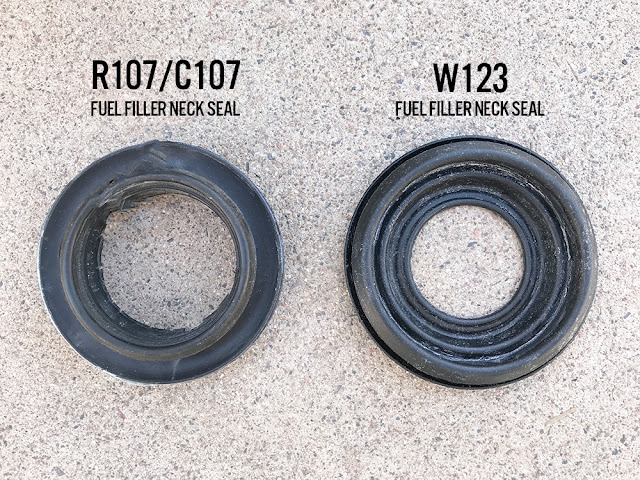107 Fuel Tank Filler Neck Grommet
If you order this part from any of the resellers or directly from Mercedes-Benz, for your R107, you will most likely receive part number 123 997 35 81. This is incorrect, as it is for a W123 and does not fit the R107. The correct part number is 107 997 24 81. This however does not end the confusion. This part number, although correct, is labeled in the Mercedes system to only fit the C107 (coupe) which is incorrect. It fits both the R107 and C107 cars.
Yes, this seal is important so water does not enter the trunk during rain or washing.
 |
| The photo shows an old R107/C107 seal and a new W123 seal. As you can see, very different design. |
107 Fuel Filler Door Lock
Similar to the grommet, if you purchase the R107 fuel filler door vacuum lock for an R107, it will turn up an incorrect part. The correct part is 107 800 12 75 which once again shows it will only fit the C107 (coupe).
NOTE:
As with any purchase, make sure to check your individual chassis and part. Mercedes, like many manufacturers changed parts etc., throughout production.
If you are unfamiliar with the Mercedes part numbering system, the first three digits of the 10 digit number usually indicate the body/chassis production design, i.e., 123 000 00 00 is for a W123 (240, 300...) and 107 000 00 00 would indicate R107/C107 (350, 450 560...)
While Mercedes does supersede part numbers on occasion, it will still generally be superseded with in the same similar time period of production. For example a W116 might have a part number supersede to an R107 and visa versa.





